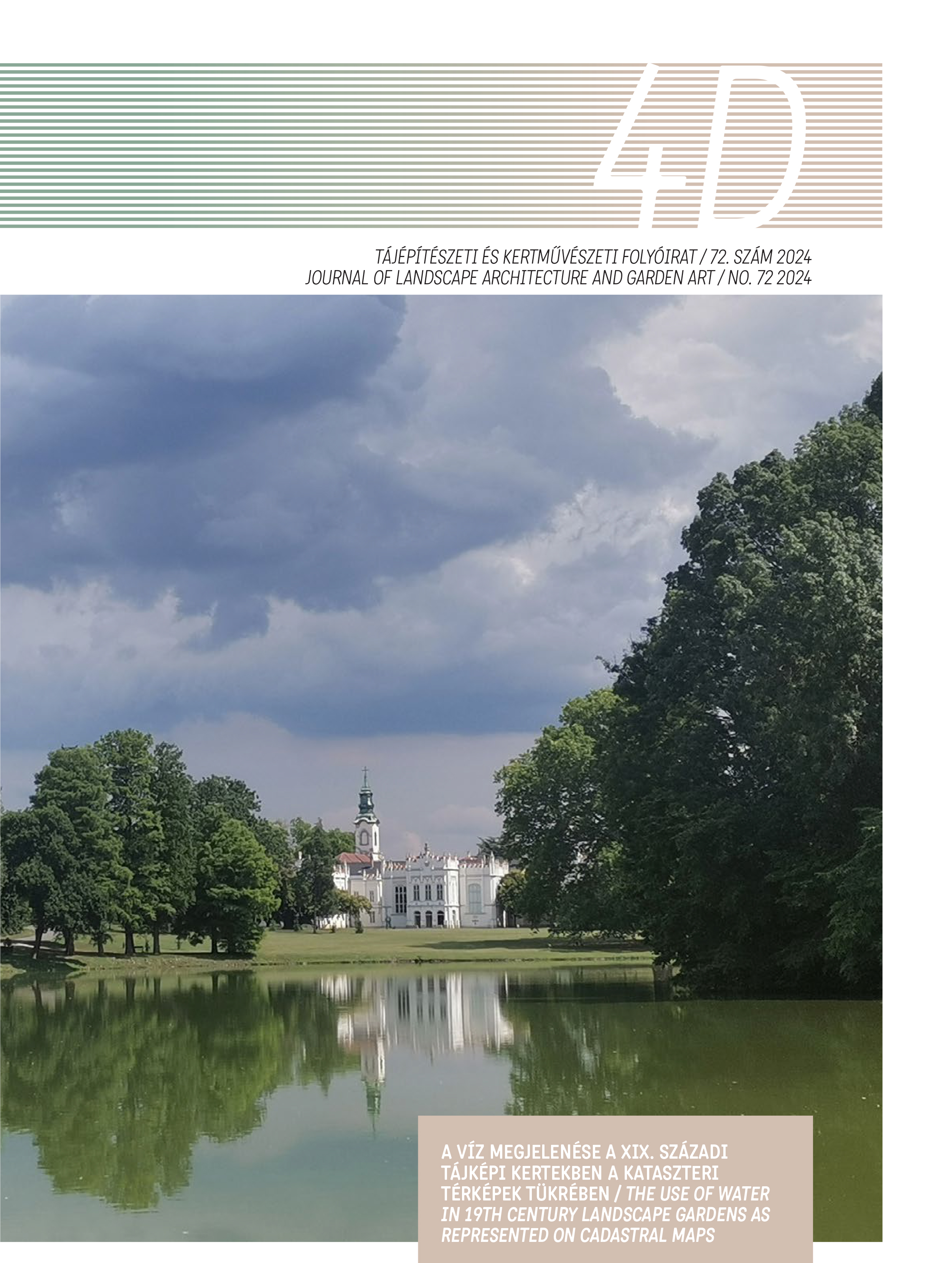The Use of water in 19th century landscape gardens as represented on cadastral maps
DOI:
https://doi.org/10.36249/4d.72.5311Keywords:
historic garden, spatial composition, water feature, garden artAbstract
The landscape gardens within the boundary of present-day Hungary can be clearly discerned in the cadastral maps of the Habsburg Empire. Although these maps record the state from a limited and narrow time period, they provide a very good overview of the gardens that existed in the second half of the 19th century. The importance of the use of water in landscape gardens is demonstrated by the fact that nearly 40% of the parks recordedon the maps at the time contained built or natural water features which were considered worthy of depiction. Our research has revealed the role of water in the landscape gardens of Hungary in a given period, the forms in which it appeared, its typical locations in the layout of the parks, and the distribution of landscape gardens with a water feature by county.
References
Ormos Imre (1955): A kerttervezés története és gyakorlata. Mezőgazdasági Kiadó: Budapest.
Rapaics Raymund (1940): Magyar kertek. Magyar Királyi Egyetemi Nyomda: Budapest.
Géczi János – Stirling János (szerk.) (1999): Régi magyar kertek, Művészetek Háza: Veszprém.
Stirling János (2008): Magyar reneszánsz kertek a XVI-XVII. században, Szent István Társulat: Budapest.
Lippay János (1966): Posoni kert. Akadémiai Kiadó: Budapest.
Sárospataki Máté (2014): Dendrológiai kertek a 19. századi magyarországi kertépítészetben. [PhD értekezés]. Budapesti Corvinus Egyetem, Tájépítészeti és Tájökológiai Doktori Iskola, Budapest. DOI: https://doi.org/10.14267/phd.2014014
Sárospataki Máté – Szabó Patrícia – Fekete Albert (2022): Future Role of Exotic Tree Species in Hungarian Built Heritage Environments. https://doi.org/10.3390/land11070984
Nádasy László Zoltán – Valánszki István – Sárospataki Máté (2023): Space Compositional Aspects Regarding the Importance of Trees in the Urban Landscape. https://doi.org/10.3390/plants12132581
Galavics Géza (1999): Magyarországi angolkertek. Balassi Kiadó: Budapest.
Buttlar, Adrian von (1999): Az Angolkert. Balassi Kiadó: Budapest.
Hajdu-Nagy Gergely (2011): Rusztikus építmények a magyar kertművészetben. [PhD értekezés]. Budapesti Corvinus Egyetem, Tájépítészeti és Tájökológiai Doktori Iskola, Budapest.
Arcanum Térképek https://maps.arcanum.com/hu (letöltés: 2024.02.01.)
Downloads
Published
Issue
Section
License
Copyright (c) 2024 Gyurasza Miklós, Sárospataki Máté

This work is licensed under a Creative Commons Attribution-NonCommercial-NoDerivatives 4.0 International License.
A folyóirat Open Access (Gold). Cikkeire a Creative Commons 4.0 standard licenc alábbi típusa vonatkozik: CC-BY-NC-ND-4.0. Ennek értelmében a mű szabadon másolható, terjeszthető, bemutatható és előadható, azonban nem használható fel kereskedelmi célokra (NC), továbbá nem módosítható és nem készíthető belőle átdolgozás, származékos mű (ND). A licenc alapján a szerző vagy a jogosult által meghatározott módon fel kell tüntetni a szerző nevét és a szerzői mű címét (BY).



